There are few drystock farmers with stock still out this week. Persistent rain last week was the nail in the 2017 grazing coffin for most farmers that were still managing to keep stock out.
The exception are those on the most free-draining soils who have turned back out weanlings or cows to try and shorten the wintering period.
November grass will not support any significant weight gain in growing or finishing cattle. Weanlings or finishing cattle that remain outdoors now should be receiving supplements of both good-quality silage and concentrates.
Dry suckler cows in good condition and on-target springing heifers are the only stock I would be happy to have outside on grass only at this point.
In the case of the heifer, it would be important she’s on target (~530kg) from a weight point of view and will be going on to a decent plane of nutrition when she hits the house (70% DMD grass silage).
On most beef farms there will be a number of different stock classes in sheds at this point and it’s important that we get the diets right for all of them.
Fertility
Fertility is one of the most important traits in a suckler cow, but management has a huge effect on it.
The most important target for driving cow fertility is body condition score at calving and it is in the next six to eight weeks that we need to correct body condition – not a month before the cow is due to calve. Separate out your very fat cows, on-track cows and thin cows. The fattest cows should receive straw and 64% to 68% DMD silage.
The on-target cows – at a BCS of 3 to 3.25 – should have full-time access to 64-68% DMD silage and thin cows should be housed along with your springing heifers and fed whatever silage (70% DMD+) your weanlings are on, to appetite.
Body condition should be corrected as soon as possible, with animals then going on to a maintenance diet of moderate quality (64-68% DMD) for four to six weeks prior to calving.
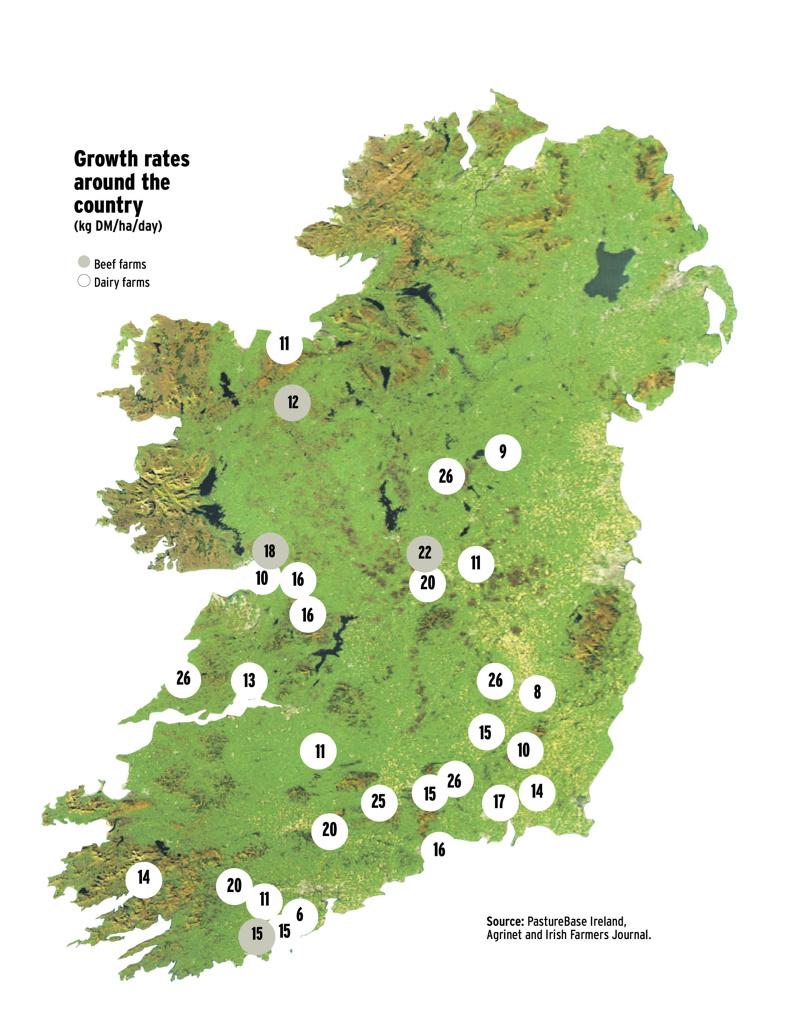

Derrypatrick Herd, Co Meath
System: suckler to beef
Soil type: mixed
Average cover (kg DM/ha): 740
Grass demand (kg DM/ha/day): 32
Growth (kg DM/ha/day): 24
There were 104 weanlings at grass until yesterday and the farm is now closed for the winter. Ground conditions, although improved compared with four weeks ago, stayed sticky. However, weanlings were grazing the area of the farm not closed (~30%) and caused little or no damage. Grazing was being managed by offering 12-24 hour allocations, paddock depending.
Last week, soil temperatures to a 10cm depth were 8°C, providing the foundations for grass growth to exceed demand by 11kg. This week, a couple of frosty nights have reduced this temperature below that required for growth and has seen grass growth decline below demand. My next farm cover will tell whether we achieved our target average cover at the point of closing of circa 550kg DM/ha – I am optimistic. The cover above is on the ground being grazed. This week, the last of the suckler-bred replacement heifers arrived to Grange. These animals are Limousin- and Simmental-sired. All were blood sampled, vaccinated against respiratory diseases, treated for parasites and quarantined upon arrival.

Co Galway
System: suckler to store
Soil type : free-draining loam
Average cover (kg DM/ha): n/a
Grass demand (kg DM/ha/day): n/a
Growth (kg DM/ha/day): n/a
The weather has improved but the rain over the weekend has finished any hopes of leaving weanlings out until December. Surprisingly, I will be tight enough on silage as I’ve housed cows earlier than usual. Coupled with this I had intended to finish Friesian steers off grass in October but the bad back end affected thrive and grazing conditions. Subsequently, these bullocks had to be housed last month and I have since made the decision to feed them on hoping for a lift in beef price. They will be slaughtered in the next week or 10 days.
I spread a bag of super P on the ground around the yard prior to the closing deadline and grass has greened up considerably. Lime isn’t an issue here, thankfully. The shed I erected earlier in 2017 has taken me out of a real dilemma, particularly with the added stock numbers I’m keeping this winter. The majority of cows are in great condition and will get the second-cut silage, with first-calvers and cows in poorer condition getting first cut which tested 72 DMD.

Co Cork
System: suckler/calf to bull beef
Soil type: relatively dry
Avg farm cover (kg DM/ha): n/a
Grass demand (kg DM/ha/day): n/a
Growth (kg DM/ha/day): n/a
I have all stock housed since late October and have nice covers of grass to carry into the spring for early grazing. I have weanlings housed on 73% DMD silage along with 1kg of 19% protein ration and 1kg of a molasses-based liquid feed.
My suckler bulls will be built up to 4kg ration before moving to the ad-lib ration for the last 100 days.
I have decided against finishing any dairy bulls under 16 months and will castrate all males with a view to finishing late next year or selling live off grass.
I will dose all stock for fluke and worms over the next few weeks. All have been clipped and a pour-on for lice has been administered.
I may be slightly short of fodder this year so I am going to purchase 40 bales to tide me over.
My main aim once Christmas is over is to get nitrogen out in mid-January with a view to turning stock out as soon after as possible.
This should help alleviate any fodder issues.

Co Carlow
System: suckler to store
Soil type: free-draining
Avg farm cover (kg DM/ha): n/a
Grass demand (kg DM/ha/day): n/a
Growth (kg DM/ha/day): n/a
All stock are in now at this stage with the exception of the cows. They are being supplemented outside with silage and straw, as they are cleaning off the last few paddocks. All the steers, heifers and weanlings have been housed over the last few weeks and they are doing well. A group of steers that I plan to finish before Christmas are doing 1.4kg of daily gain. They are currently being fed 77% DMD silage and 6kg of ration. I also have a group of heifers and cows that I hope to slaughter next week. They are on similar feed to the steers and they have been doing around 1kg a day since the last weighing. Weanlings are currently on the same silage as the steers and heifers and they are also getting 1.5kg of a 16% protein ration. Last week I clipped the backs of all the stock housed to help keep them cool with the mild weather conditions. I noticed a few bought-in steers very loose in dung so I treated them for fluke.
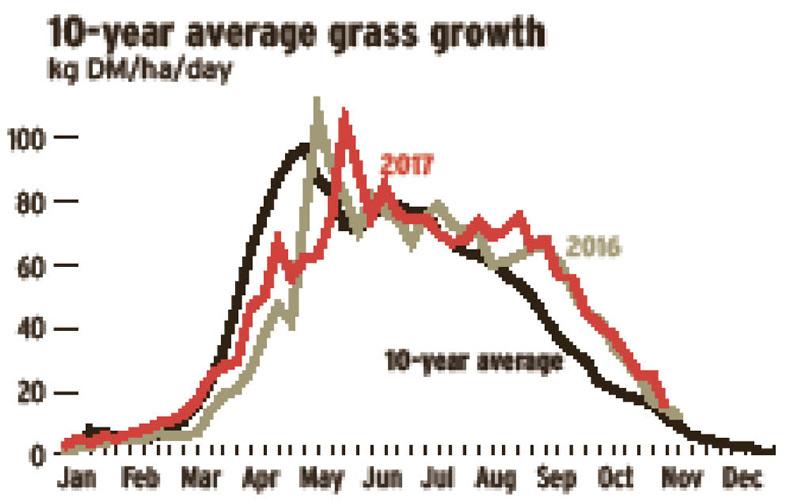
Read more
Grass+ dairy: grazing coming to an end on most farms
There are few drystock farmers with stock still out this week. Persistent rain last week was the nail in the 2017 grazing coffin for most farmers that were still managing to keep stock out.
The exception are those on the most free-draining soils who have turned back out weanlings or cows to try and shorten the wintering period.
November grass will not support any significant weight gain in growing or finishing cattle. Weanlings or finishing cattle that remain outdoors now should be receiving supplements of both good-quality silage and concentrates.
Dry suckler cows in good condition and on-target springing heifers are the only stock I would be happy to have outside on grass only at this point.
In the case of the heifer, it would be important she’s on target (~530kg) from a weight point of view and will be going on to a decent plane of nutrition when she hits the house (70% DMD grass silage).
On most beef farms there will be a number of different stock classes in sheds at this point and it’s important that we get the diets right for all of them.
Fertility
Fertility is one of the most important traits in a suckler cow, but management has a huge effect on it.
The most important target for driving cow fertility is body condition score at calving and it is in the next six to eight weeks that we need to correct body condition – not a month before the cow is due to calve. Separate out your very fat cows, on-track cows and thin cows. The fattest cows should receive straw and 64% to 68% DMD silage.
The on-target cows – at a BCS of 3 to 3.25 – should have full-time access to 64-68% DMD silage and thin cows should be housed along with your springing heifers and fed whatever silage (70% DMD+) your weanlings are on, to appetite.
Body condition should be corrected as soon as possible, with animals then going on to a maintenance diet of moderate quality (64-68% DMD) for four to six weeks prior to calving.


Derrypatrick Herd, Co Meath
System: suckler to beef
Soil type: mixed
Average cover (kg DM/ha): 740
Grass demand (kg DM/ha/day): 32
Growth (kg DM/ha/day): 24
There were 104 weanlings at grass until yesterday and the farm is now closed for the winter. Ground conditions, although improved compared with four weeks ago, stayed sticky. However, weanlings were grazing the area of the farm not closed (~30%) and caused little or no damage. Grazing was being managed by offering 12-24 hour allocations, paddock depending.
Last week, soil temperatures to a 10cm depth were 8°C, providing the foundations for grass growth to exceed demand by 11kg. This week, a couple of frosty nights have reduced this temperature below that required for growth and has seen grass growth decline below demand. My next farm cover will tell whether we achieved our target average cover at the point of closing of circa 550kg DM/ha – I am optimistic. The cover above is on the ground being grazed. This week, the last of the suckler-bred replacement heifers arrived to Grange. These animals are Limousin- and Simmental-sired. All were blood sampled, vaccinated against respiratory diseases, treated for parasites and quarantined upon arrival.

Co Galway
System: suckler to store
Soil type : free-draining loam
Average cover (kg DM/ha): n/a
Grass demand (kg DM/ha/day): n/a
Growth (kg DM/ha/day): n/a
The weather has improved but the rain over the weekend has finished any hopes of leaving weanlings out until December. Surprisingly, I will be tight enough on silage as I’ve housed cows earlier than usual. Coupled with this I had intended to finish Friesian steers off grass in October but the bad back end affected thrive and grazing conditions. Subsequently, these bullocks had to be housed last month and I have since made the decision to feed them on hoping for a lift in beef price. They will be slaughtered in the next week or 10 days.
I spread a bag of super P on the ground around the yard prior to the closing deadline and grass has greened up considerably. Lime isn’t an issue here, thankfully. The shed I erected earlier in 2017 has taken me out of a real dilemma, particularly with the added stock numbers I’m keeping this winter. The majority of cows are in great condition and will get the second-cut silage, with first-calvers and cows in poorer condition getting first cut which tested 72 DMD.

Co Cork
System: suckler/calf to bull beef
Soil type: relatively dry
Avg farm cover (kg DM/ha): n/a
Grass demand (kg DM/ha/day): n/a
Growth (kg DM/ha/day): n/a
I have all stock housed since late October and have nice covers of grass to carry into the spring for early grazing. I have weanlings housed on 73% DMD silage along with 1kg of 19% protein ration and 1kg of a molasses-based liquid feed.
My suckler bulls will be built up to 4kg ration before moving to the ad-lib ration for the last 100 days.
I have decided against finishing any dairy bulls under 16 months and will castrate all males with a view to finishing late next year or selling live off grass.
I will dose all stock for fluke and worms over the next few weeks. All have been clipped and a pour-on for lice has been administered.
I may be slightly short of fodder this year so I am going to purchase 40 bales to tide me over.
My main aim once Christmas is over is to get nitrogen out in mid-January with a view to turning stock out as soon after as possible.
This should help alleviate any fodder issues.

Co Carlow
System: suckler to store
Soil type: free-draining
Avg farm cover (kg DM/ha): n/a
Grass demand (kg DM/ha/day): n/a
Growth (kg DM/ha/day): n/a
All stock are in now at this stage with the exception of the cows. They are being supplemented outside with silage and straw, as they are cleaning off the last few paddocks. All the steers, heifers and weanlings have been housed over the last few weeks and they are doing well. A group of steers that I plan to finish before Christmas are doing 1.4kg of daily gain. They are currently being fed 77% DMD silage and 6kg of ration. I also have a group of heifers and cows that I hope to slaughter next week. They are on similar feed to the steers and they have been doing around 1kg a day since the last weighing. Weanlings are currently on the same silage as the steers and heifers and they are also getting 1.5kg of a 16% protein ration. Last week I clipped the backs of all the stock housed to help keep them cool with the mild weather conditions. I noticed a few bought-in steers very loose in dung so I treated them for fluke.

Read more
Grass+ dairy: grazing coming to an end on most farms
















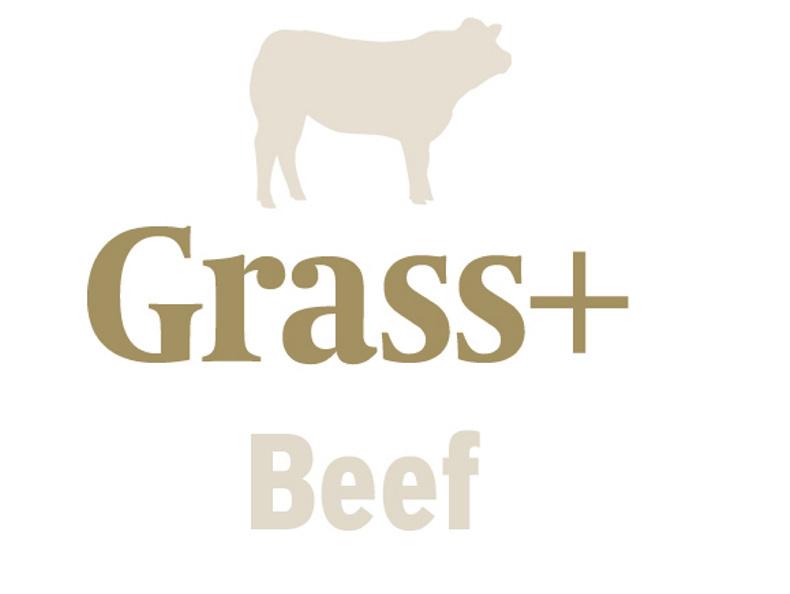
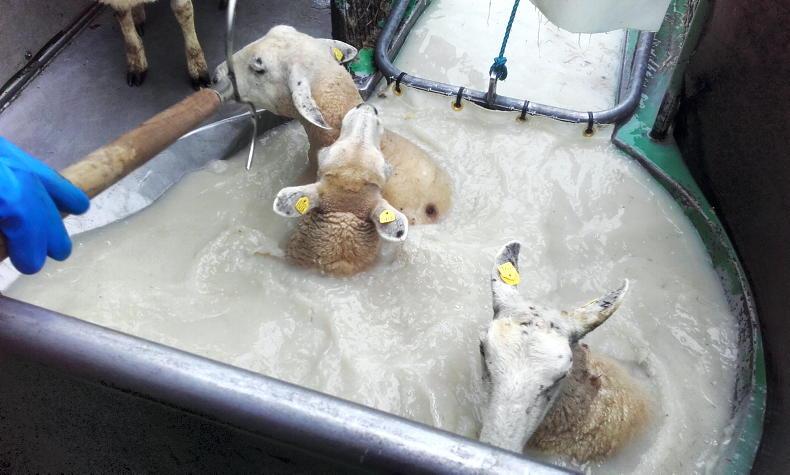

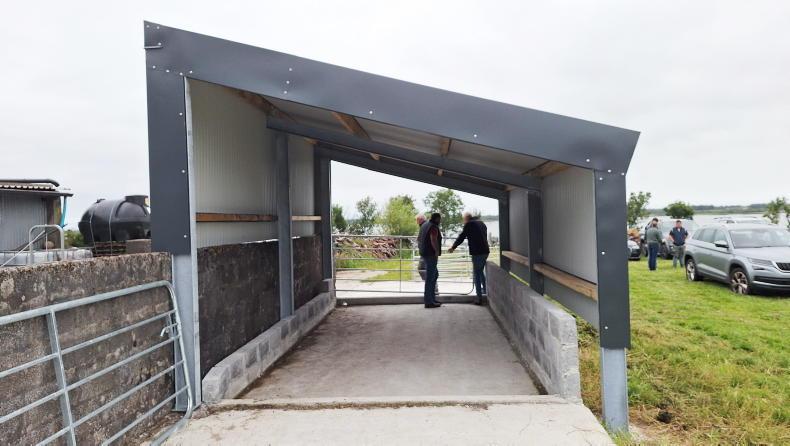
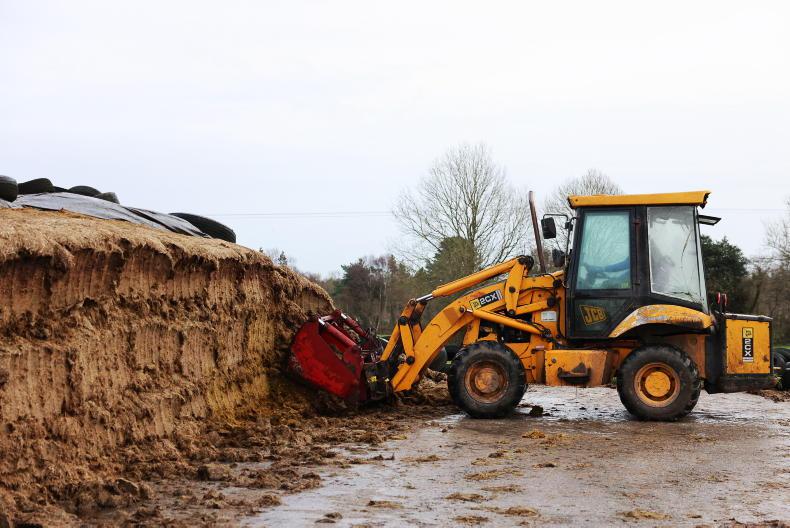
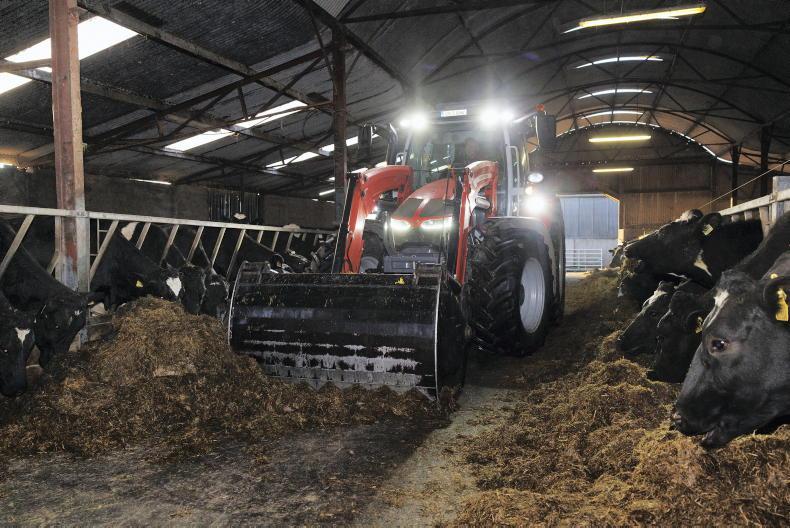
SHARING OPTIONS